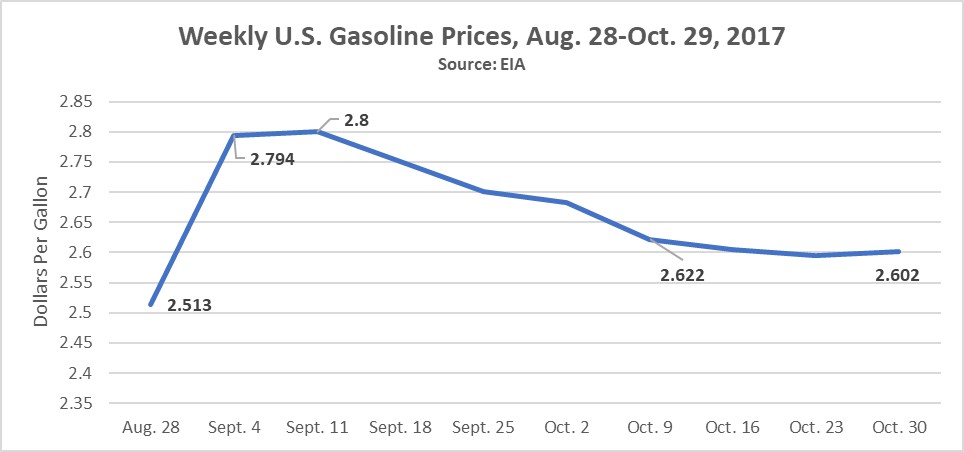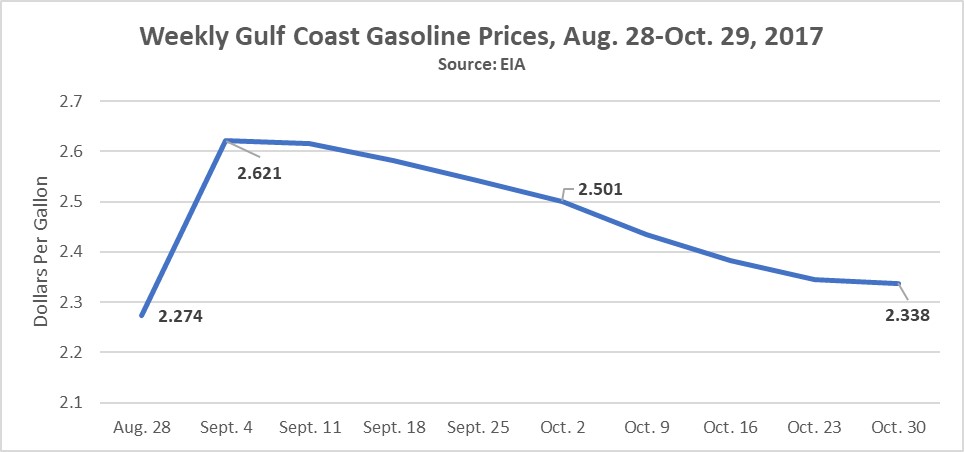This time a year ago, Houston and the Texas Gulf Coast were reeling from Hurricane Harvey, a monster storm that came ashore twice in less than a week, causing death and an estimated $125 billion in damage while inundating some parts of Texas with more than 60 inches of rain – a record for a U.S. weather event.
The natural gas and oil industry prepared for the storm to help minimize risk to critical energy infrastructure, including refineries and pipelines, and then was able to respond to the hurricane’s impacts, which helped limit supply disruptions and aided the recovery.
Our industry’s experiences last year help guide readiness this year. And with Tropical Storm Gordon nearing the Gulf Coast, safety tops the list of readiness goals – to protect our employees, vital infrastructure and neighboring communities while also having specific plans in place to restart facilities and hel;p restore fuel supplies if there are disruptions. Suzanne Lemieux, API midstream and industry operations manager, during a conference call with reporters at the beginning of this year’s hurricane season:
“Our [industry’s] efforts to prepare for these weather events were evident during the 2017 hurricane season, where consumers across the country saw limited impacts on gasoline prices. In fact, our nation’s diverse energy infrastructure network, including pipelines, tankers and barges, helped ensure that consumers had the energy they needed and demanded before, during and after the storms.”
The fact is, industry’s efforts played an important role in muting Harvey’s effect on fuel supplies and costs to consumers. When Hurricane Katrina struck in 2005, gasoline prices rose from a national average $2.60 a gallon to as high as $5 in some places. That kind of spike didn’t happen last year. Charts below from U.S. Energy Information Administration data track gasoline prices in late August 2017 through October – nationally:

And in the Gulf Coast region:

Both show prices at the pump rising the first couple of weeks after Harvey, then receding almost to pre-hurricane levels by the end of October. This was largely due to the ability of Gulf Coast refiners to quickly got back online and the fuel distribution system’s ability to deliver supplies, often across hundreds of miles.
Meanwhile, natural gas infrastructure proved resilient – underscored in a recent Natural Gas Council report. The hurricane’s effects were mostly limited. Rebecca Massello, director of security, reliability and resilience for the Interstate Natural Gas Association of America:
“The U.S. natural gas industry has a proven track record of reliability and resilience as demonstrated by the 2017 hurricane season, which despite its ferocity, saw few outages and minimal impacts on nationwide natural gas prices. Increased supply diversity from inland natural gas production coupled with the fact that nearly all U.S. natural gas is shipped through underground pipelines — which are largely protected from winds and flooding — helps ensure that pipelines remain reliable during extreme weather events. In addition, the natural gas delivery network, which includes varied sources of gas supply, multiple pipeline pathways between producers and consumers, and ample underground natural gas storage, provides multiple opportunities for work arounds if supply is disrupted during an extreme weather event. These design considerations coupled with regularly updated and tested emergency response plans help the natural gas pipeline industry prepare for and quickly recover from hurricanes and other events.”
That said, here’s some of what was learned from 2017:
Planning mattered
Industry’s response last year was built on advance planning and building relationships inside and outside our companies – with local, state and federal officials and the public.
This included being ready to request temporary waivers from regulations that might be (and were) needed. One example is a waiver to allow fuel tanker drivers to extend their driving hours so they could deliver supplies from long distances.
Preparation also included keeping the public informed about supply and industry preparations before the storm hit and pre-storm exercises to test various systems and procedures that proved important during the emergency.
Communication was critical
Companies planned to be flexible in using a number of back-up sites, technology and existing communications protocols to keep employees working and to help companies assist impacted communities. Going forward, information about industry preparations and storm responses is important to counter misinformation and confusion in an emergency.
Multiple events challenged restoration efforts
The 2017 experience showed it’s important to have a deep bench of well-trained staff so that operations can get back to normal as soon as it’s safe. Companies also learned how to determine when people in different industry roles should be brought back to work.
Coordination with local, state and federal agencies is critical during and after the emergency. Public officials’ understanding that fuel supplies are critical in general recovery efforts can help accelerate restoration of energy operations.
We’re in the heart of the hurricane season, and the next few weeks could see major weather events that put preparations to the test – pre-event training, the setting of emergency protocols and procedures, coordinating communications and more.
Our industry works hard to be as ready as possible: to protect against storms’ direct impacts, restore operations when it is safe and to help minimize supply disruptions – even as our companies and their employees respond as good neighbors in their hometowns.
By Mark Green
Originally posted September 4, 2018
Energy Tomorrow is brought to you by the American Petroleum Institute (API), which is the only national trade association that represents all aspects of America’s oil and natural gas industry. Our more than 500 corporate members, from the largest major oil company to the smallest of independents, come from all segments of the industry. They are producers, refiners, suppliers, pipeline operators and marine transporters, as well as service and supply companies that support all segments of the industry.

